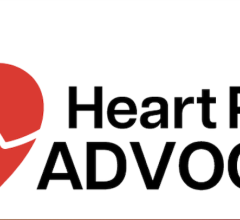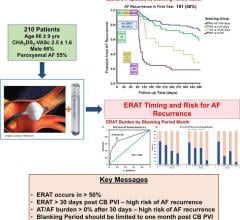
June 26, 2018 — MedStar Heart & Vascular Institute physicians participating in a clinical trial have become the first in the Mid-Atlantic region to implant the Watchman FLX device. The Watchman FLX is the next generation of a potentially life-changing device proven to reduce the risk of stroke in certain patients with atrial fibrillation (AFib).
The Watchman FLX is being studied for its ability to provide doctors with greater flexibility and safety while positioning the device in the left atrial appendage (LAA), a sub-chamber of the heart where blood can pool and form clots. Those clots may then escape into the circulatory system and block blood flow to brain tissue.
“Our participation in this clinical trial is an example of how the comprehensive AFib program at MedStar Heart & Vascular Institute at MedStar Washington Hospital Center is providing patients with access to cutting-edge devices and treatments before they are widely available,” said Manish Shah, M.D., director of the Clinical Cardiac Electrophysiology Fellowship Training Program at the Hospital Center and principal investigator for the new trial.
MedStar Heart & Vascular Institute is one of approximately 40 sites in the U.S. selected for Watchman FLX implantation, and Shah is currently the leading implanter of devices nationwide.
AFib is the most common cardiac arrhythmia in adults, affecting more than 5 million Americans, and is expected to become even more common as the population ages. AFib causes about 20 percent of all strokes, and strokes from AFib are particularly severe and twice as likely to cause death or incapacitation compared to strokes from other causes.
Blood thinners are commonly prescribed to patients with AFib to reduce their risk of stroke. But patients and their physicians often have reservations about these types of drugs because of bleeding risks, especially in those patients with an increased risk of falls, along with the potential for medication interactions. As a result, up to 45 percent of patients with AFib may go untreated and unprotected from stroke.
Watchman FLX is designed to prevent the movement of blood clots formed within the left atrial appendage into the bloodstream, thereby protecting patients from AFib-related strokes.
“Atrial fibrillation and its consequences are a growing epidemic, especially as our population ages,” said Stuart F. Seides, M.D., physician executive director, MedStar Heart & Vascular Institute. “The refinement of a tool that may prevent strokes more securely in more patients is welcome.”
The first version of Watchman became available internationally in 2009, and since then various generations of the device have been implanted more than 50,000 times.
For more information: www.bostonscientific.com


 December 19, 2024
December 19, 2024 








